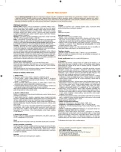Basal cell carcinoma in a young patient
Authors:
L. Janáčková; Jaroslav Klát
; O. Šimetka
Authors‘ workplace:
Porodnicko-gynekologická klinika OU a FN, Ostrava, přednosta doc. MUDr. V. Unzeitig, CSc.
Published in:
Ceska Gynekol 2015; 80(1): 42-44
Overview
Objective:
The aim of this article is to highlight a possible occurrence of basal cell carcinoma in young patient.
Design:
Case report.
Setting:
Porodnicko-gynekologická klinika FN Ostrava.
Methods:
We report case of a 37-year-old patient with a lesion of a vulva, which persisted for 3 years. The patient was during these free years repeatedly examined by a gynecologist and a dermatologist. She was treated by antibiotics and corticosteroids without any effect. After 3 years she was sent to an expert examination, during which was removed a biopsy. From the biopsy specimen was diagnosed basal cell carcinoma. Radical excision was indicated due tu the finding.
Results:
Patient is now 29 months disease-free.
Conclusion:
Any persistent lesion in the vulvar region should be subjected to histological examination, even in young patients where the diagnosis of basal cell vulvar carcinoma is very unlikely.
Keywords:
basal cell carcinoma, vulva
Sources
1. Cruz-Jimenez, PR., Abell, MR. Cutaneous basal cell carcinoma of vulva. Cancer, 1975, 36, p. 1860–1868.
2. Fleury, AC., Junkins-Hopkins, JM., Diaz-Montes, T. Vulvar basal cell carcinoma in a 20-year-old: Case report and review of the literature. Gynecologic oncology case report, 2012, 2, p. 26–27.
3. Hoffman, MS., Roberts, WS., Ruffolo, EH. Basal cell carcinoma of the vulva with lymph node metastases. Gynecol Oncol, 1988, 29, p. 113–119.
4. Kara, M., Colgecen, E., Yildirim, EN. Vulvar basal cell carcinoma. Indian J P Pathol Microbiol, 2012, 55, p.583–584.
5. Pisani, C., Poggiali, S., Padova, LD., et al. Basal cell carcinoma of the vulva. JEADV, 2006, 20, p. 446–448.
6. Wong, CS., Strange, RC., Lear, JT. Basal cell carcinoma. BMJ, 2003, 327, p. 794–798.
Labels
Paediatric gynaecology Gynaecology and obstetrics Reproduction medicineArticle was published in
Czech Gynaecology

2015 Issue 1
Most read in this issue
- The 4G/4G polymorphism of the plasminogen activator inhibitor-1 (PAI-1) gene as an independent risk factor for placental insufficiency, which triggers fetal hemodynamic centralization
- The risk factors for pelvic floor trauma following vaginal delivery
- Anterior colporrhaphy under local anesthesia
- Transurethral Injection of Polyacrylamide Hydrogel (Bulkamid®) for the Treatment of Recurrent Stress Urinary Incontinence after Failed Tape Surgery
